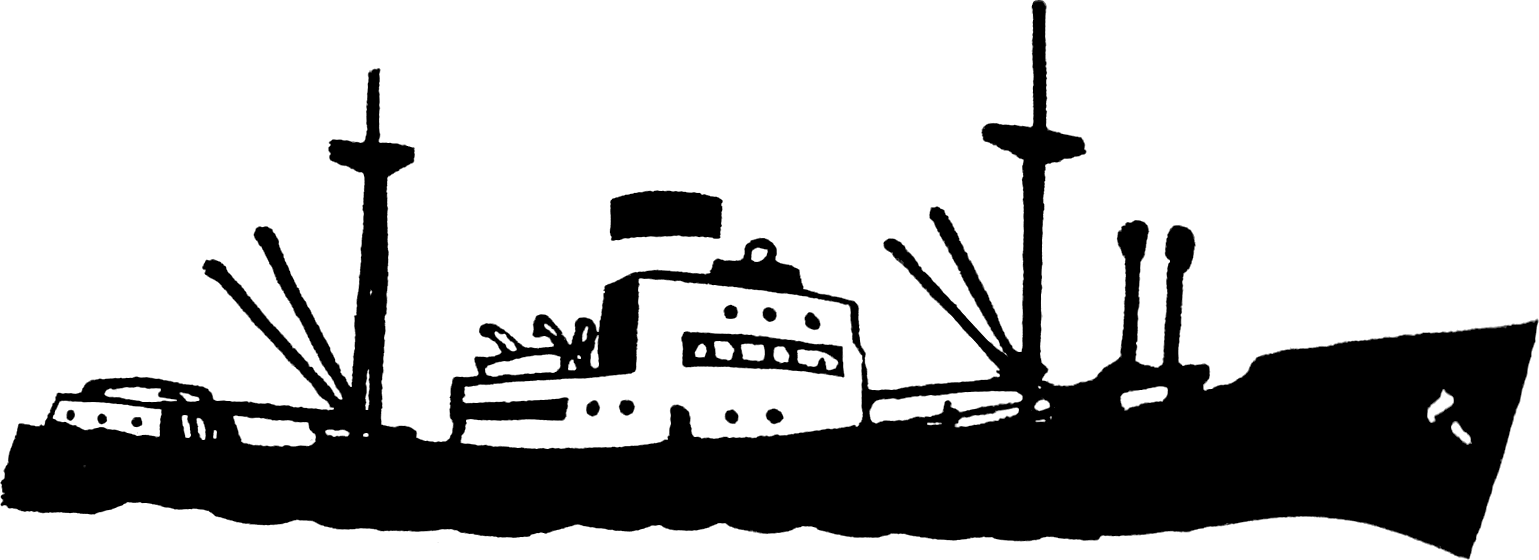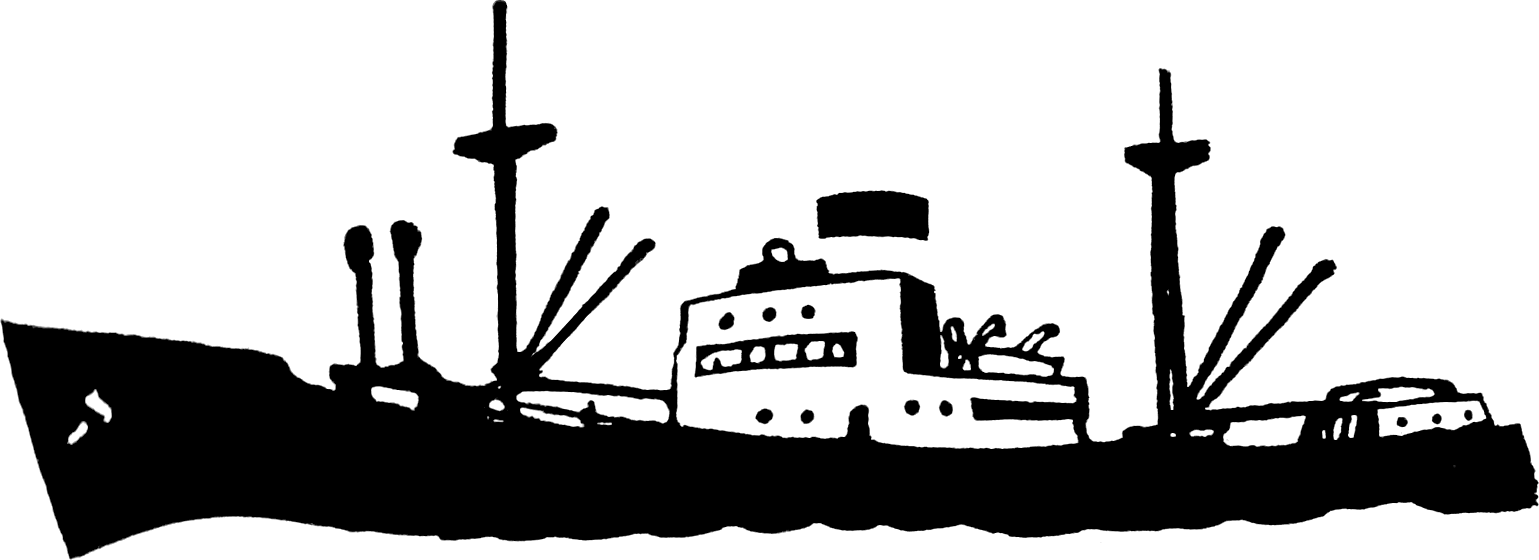This board game was published in 1959 by Damm, Norway’s dominant game publisher in the twentieth century, as their game number 387. It is a translation of the Danish Søfartsspil published by Palet, one of the major game publishers in Denmark alongside Drechsler and Sesam. The game is not only inspired by the 1956 game Wangaratta by the largest Swedish game publisher, Alga, but could even be described as an improved version of it. Confusingly enough, Damm later published a Norwegian translation of Wangaratta, also under the title Shipping.
The game was popular in Norway, and seems to have had at least three printings with minor cosmetic differences. One of the reasons was of course the theme. At one point in the period, Norway with a mere one thousandth of the world’s population controlled one tenth of its shipping capacity, and there were many different games on this theme published in all three Scandinavian countries. Another reason is that it was an unusually good game for its time, which is why I cover it here.
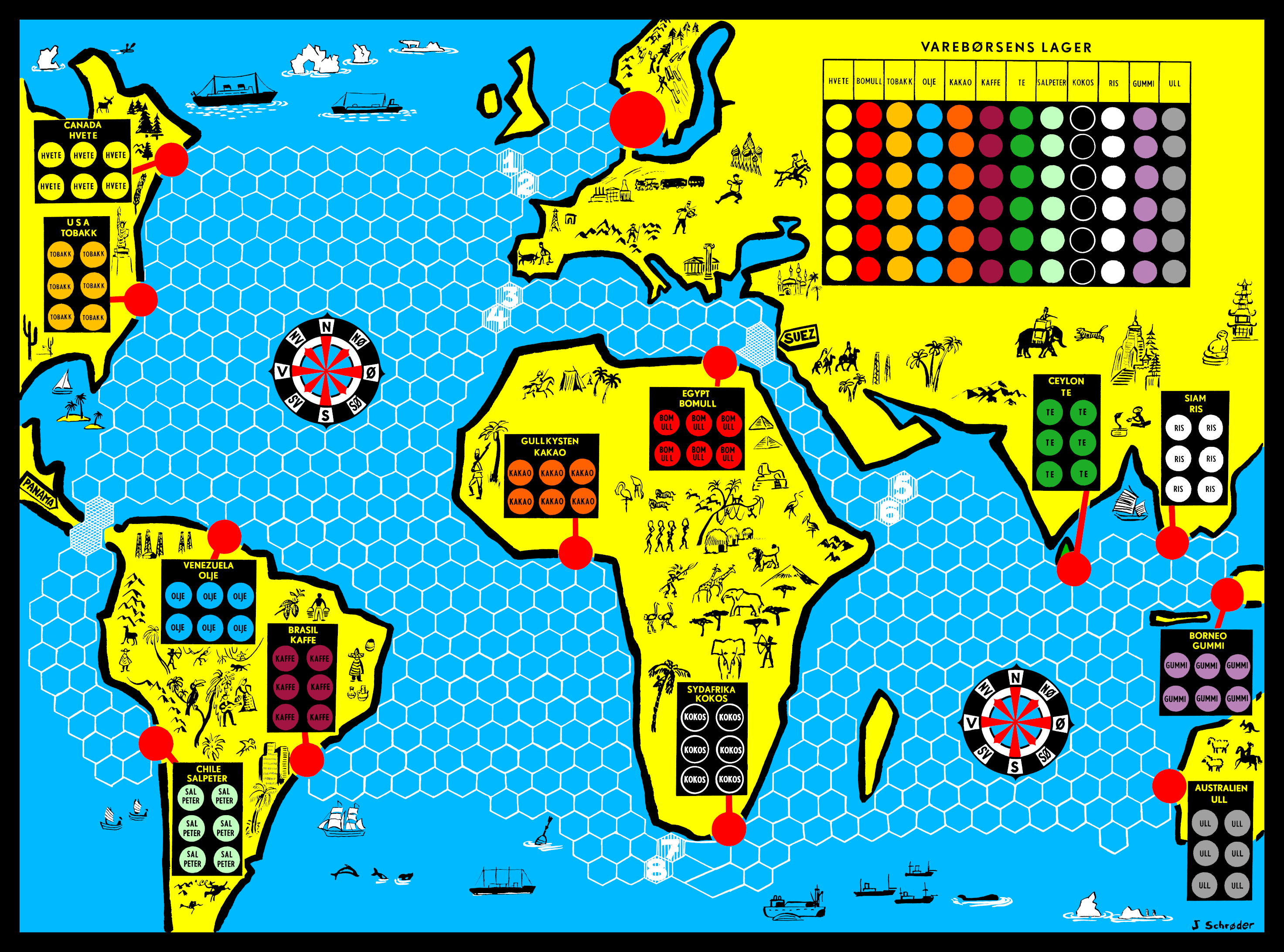
The game board consists of a simplified map covering the non-arctic parts of the hemisphere centered on Europe and Africa, described as a world map in the rules. A hex grid for the players’ ships to move on covers the oceans, and the map is in places deliberately distorted in order to make narrow areas such as the English Channel and the Mediterranean Sea wide enough for ships to pass each other. Twelve ports in the Americas, Africa, Asia and Australia contain storage areas for the commodities that the players are to transport to the Scandinavian home port.
The circle representing this port covers almost all of Denmark and also small parts of Norway and Sweden; specifically including Oslo, the capital of Norway and one of its most important ports, and Gothenburg, Sweden’s main west-facing port. This seems like a deliberate choice in order to facilitate localised versions for each of the Scandinavian countries without needing to modify the graphics. The choice of referring to this port simply as the Scandinavian port in the rules support this, and despite no Swedish version ever having been made to my knowledge, Damm, Alga and Palet simultaneously published Norwegian, Swedish and Danish versions of other games in the same year.
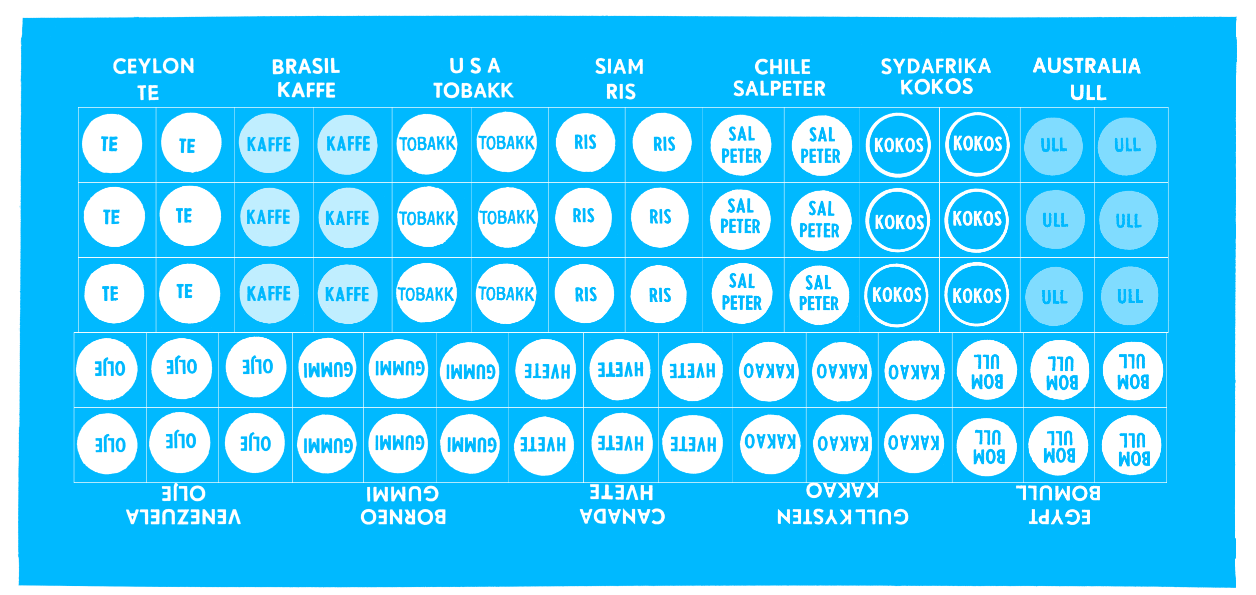
The seventy-two commodity tokens are 12.7 mm (half-inch) square chits representing six each of the twelve types of commodities in the game. The transportation of these from the storage areas beside their ports to Scandinavia is the main part of the game. Whereas these storage areas are printed in colour on the board, the chits themselves are monochrome: blue in the Norwegian version, black in the Danish. However, as they are printed reusing the storage areas sections of the black plate used to print the game board, one of the types is in inverted colour, and two have a halftone raster behind the text. They are printed on the same type of cardboard as the game board.
The Danish rules state that the commodity chits are to be stacked underneath the ships when carried, but this passage is missing from the Norwegian rules. Doing so makes moving the ships more fiddly, but makes it easy to distinguish between commodities being transported on a player’s ship and ones bought from the commodities exchange after being sold in the home port, as these are just placed in front of the player.

The price of each commodity type is determined by a price chart. This has one row for each of the twelve commodities, and eight columns of prices. The active column is indicated by a metal clip, which moves to the next column (or loops back to the first) whenever the active player rolls a total of five.
It is printed twice on a piece of cardboard that is folded into an inverted ‘V’ so that it stands upright and shows the table on both sides. As the same clip is used as the indicator for both sides, one side is numbered from right to left. The twelve commodities are divided into three groups, where the price of the commodities in each group vary in the same pattern, only offset in time from each other. Prices that will fall with the next change are printed in red. The commodities found in the ports closest to Scandinavia have the lowest range of values, and the ones further away are the most expensive, but there is significant overlap in their ranges.
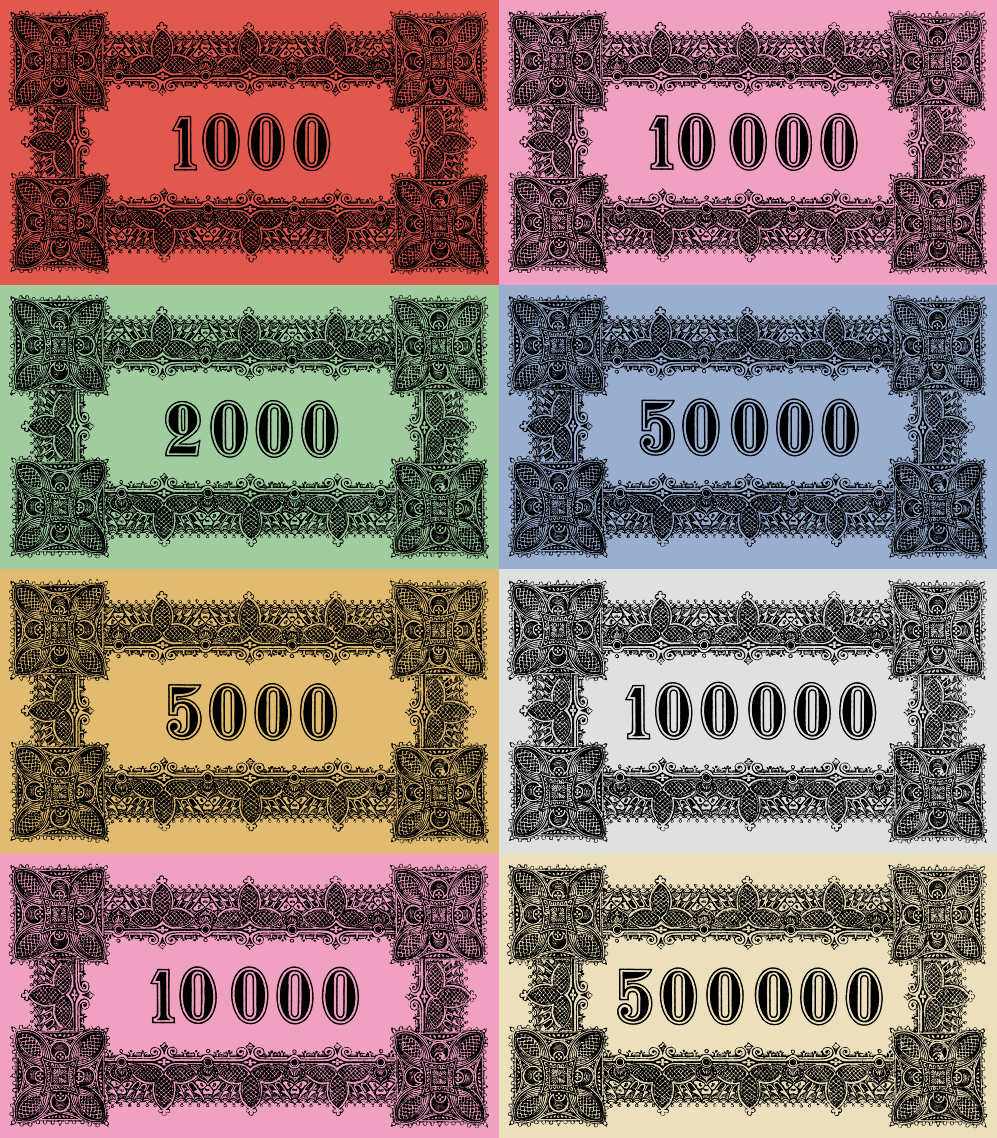
The money is quite different in the two versions. Where the Danish one has simple white cardboard slips similar to the telegram cards with the numbers 1, 2, 5, 10, 50, 100 and 500 and the word points printed in black, the Norwegian one has banknotes printed in black on coloured paper with the denominations in multiples of one thousand. There are ten each of most denominations, but twenty of the 10 (thousand) and only four of 500 (thousand). The colour of the paper used for each denomination in the Norwegian version is one of the details that vary between some of the print runs.
The design of these banknotes is the same as in the Finnish version of Wangaratta, where it is instead printed in various colours on white paper. In this form the design was later also used for games published both by Palet (Det store FDM spil, late versions of Byen Rundt), and by Joker (Matador, the traditional Danish slightly simplified version of Monopoly previously published by Drechsler since 1936, and Afrikas stjerne, a translation of Afrikan tähti). That both these publishers used the same design is rather odd, as they were in direct competition, with Palet trying to cut into the lucrative market of Matador with its own Danish translation of standard Monopoly.
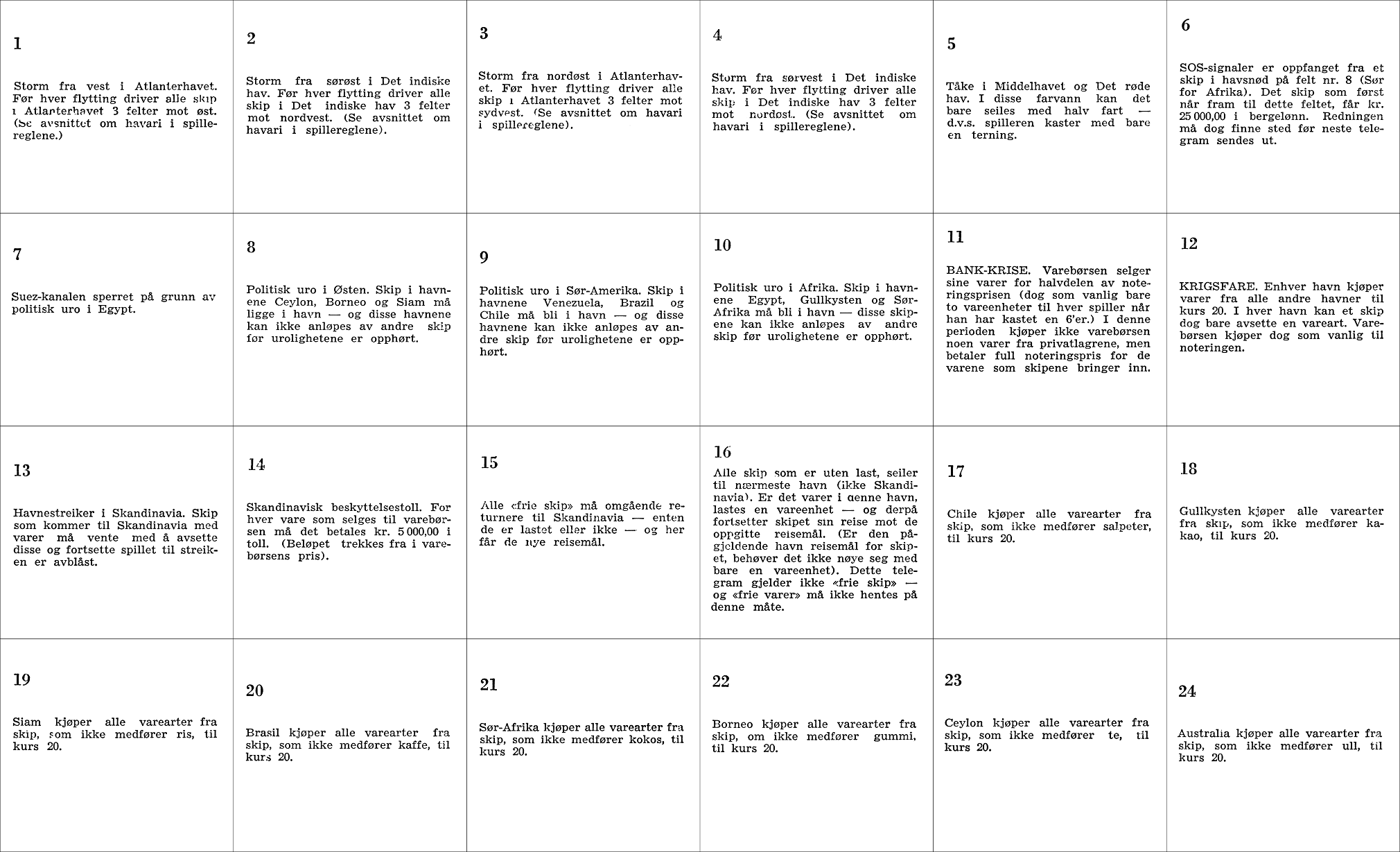
Twenty-four telegram cards are shuffled and placed in a draw pile at the beginning of the game. Cards are drawn when a player rolls two of a kind, but apply to all players. The cards measure 57 by 52 mm and are printed in black text on thin white cardboard with plain white backs. In addition to the text, each card is numbered, but the numbers have no function in the game.
There exists at least two versions of the telegram cards with minute differences in the wording and slightly different typography.


Four plastic ships in primary colours represent the players on the board. In the Danish version, these have a shape based on the ship depicted on the box cover, DFDS’ Arkansas. In order to include sufficient detail, these ended up too long to fit well on the hexagonal spaces of the board. This is presumably the reason why the Norwegian edition instead copied the ship piece design from Wangaratta, with a smaller and less detailed ship atop a circular base only slightly larger than the board spaces.
Two normal six-sided black dice are rolled at the start of each player’s turn. These indicate the number of spaces to move, if a telegram (chance card) is to be drawn, if commodity prices change and whether the player is allowed to trade with the commodities exchange. The conditions are cleverly chosen so that there is only a very small chance that two of the latter three effects can be triggered by the same roll.
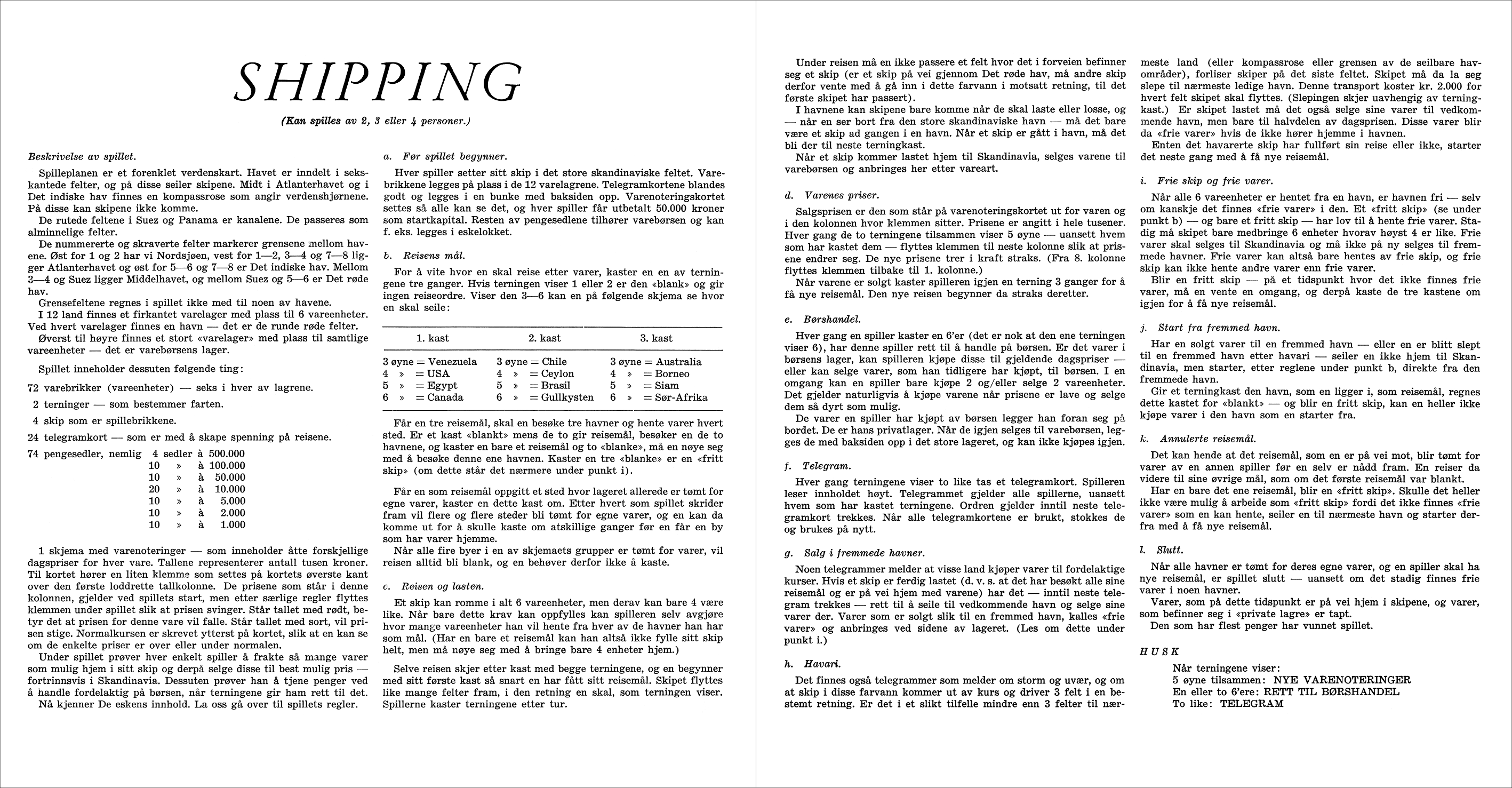
The rules are printed on both sides of a single non-folded 240 by 250 mm sheet of paper, with no colour or illustrations.
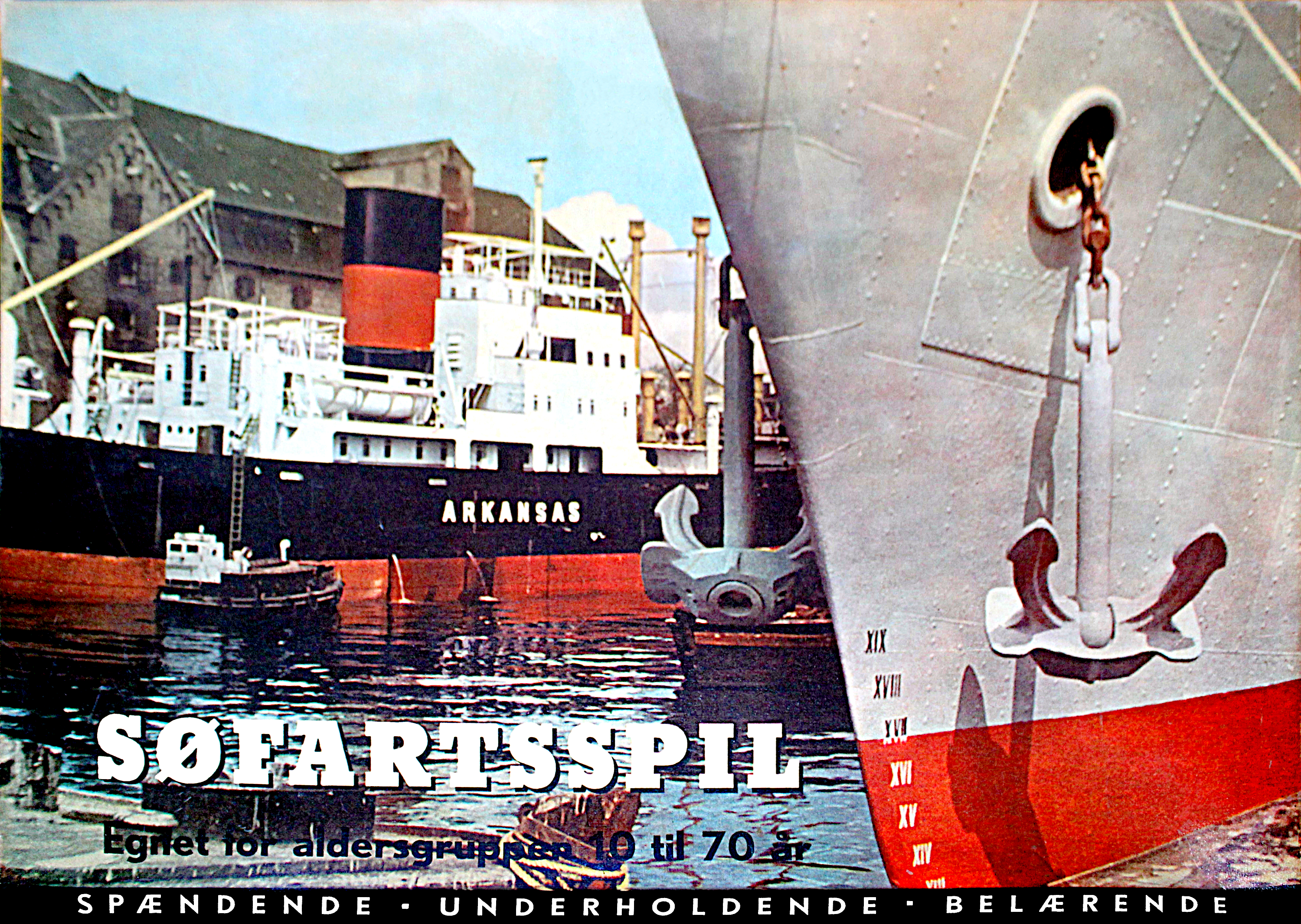
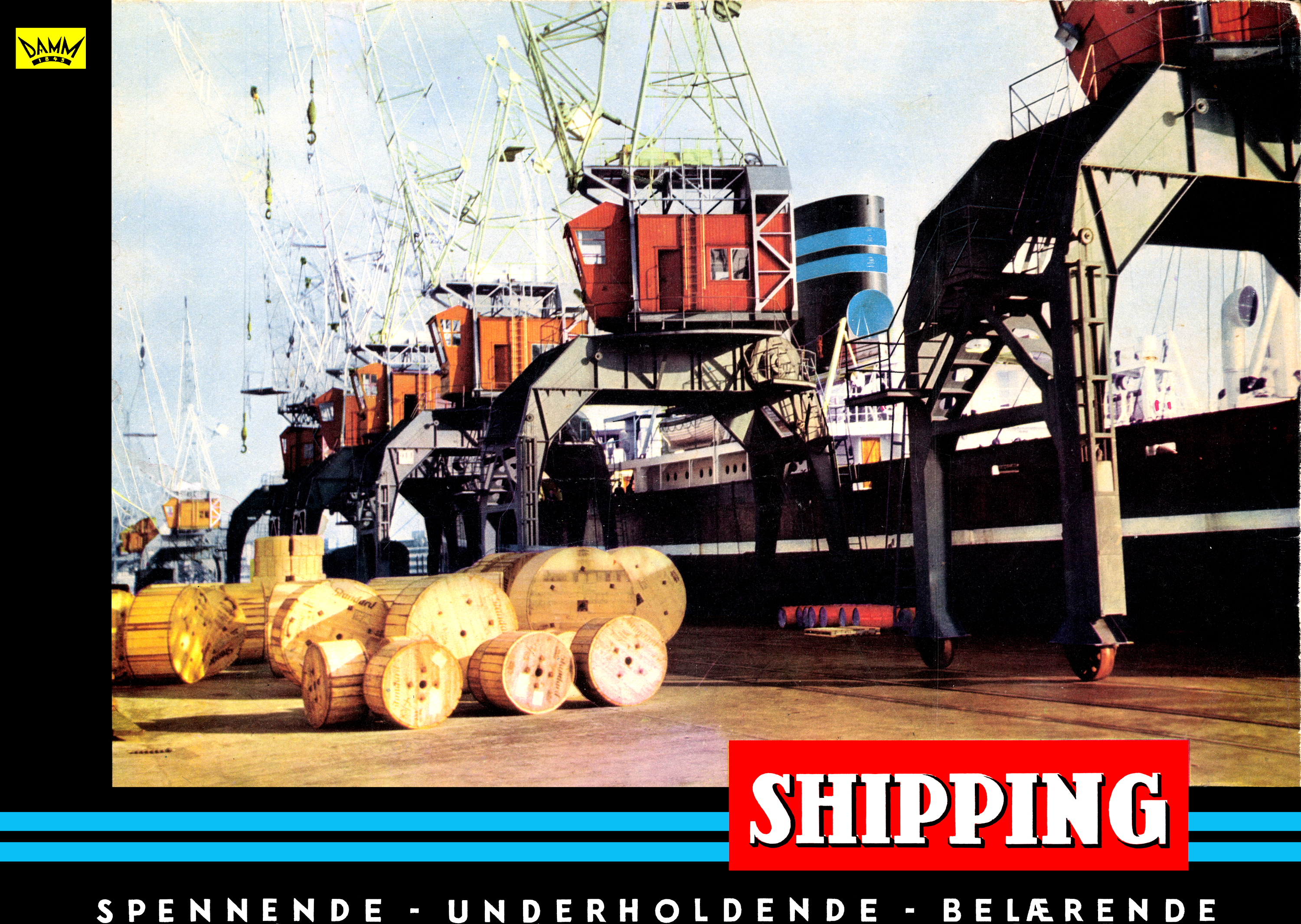
The game box fronts of both versions are dominated by hand-tinted black and white photographs of cargo ships in port.
The Danish one contains two ships from DFDS, Det Forenede Dampskibs-Selskab (literally “The United Steamship Company”), painted in the two varieties of the company colours of the period. The closest one which is light gray above the waterline and red below is unidentifiable as we only see part of its bow. The other is M/S Arkansas. which is black above the waterline, making the hull match the black funnel with a broad red band. Although only part of this ship is visible in the image, its full shape is used both for the vignette illustration on the sides of the box and for the plastic playing pieces in the Danish version. Behind this ship we see the old warehouse known as korntørringsmagasinet or “the grain drying depot”. This consists of two identical buildings constructed in 1781, in 1885 connected by a central section with the gable visible on the left. In 1959, this was listed as a protected structure, which was taken into account when it was converted into a hotel in 1985 under the suitably maritime name Copenhagen Admiral Hotel.
The tagline at the bottom of the box reads spændende — underholdende — belærende, meaning “exciting, entertaining, educational”, and was used on several games by Palet from this period. It was also used on the Norwegian version just with the first word adapted to Norwegian orthography. This is a bit odd, as in Norwegian, the meaning of the last word has shifted to something like “preachy”; a development that presumably must have been well underway at the time. In a contemporary Scandinavian parallel release where the Danish version uses this tagline, it is missing from the Norwegian one, but in Swedish it is rendered spännande — underhållande — lärorikt with the third word changed as one would expect in a Norwegian rendering as well.
The picture on the Norwegian box is from the Filipstad quay in central Oslo. It is taken roughly in the direction of Tjuvholmen (“the thief islet”), where the luxury hotel The Thief is now located, which was at the time used by the port authority. The black hull with a white line and the black funnel with two blue lines shows that the ship belongs to Wilhelmsen Lines. Its exact identity is harder to pin down; among the candidates are M/S Tai Shan and M/S Tai Yin. The signature pair of blue lines on black background is also repeated as part of the box layout, but there is no further indication of any official connection between the game and this company.
Tor Gjerde <i@old.no>
